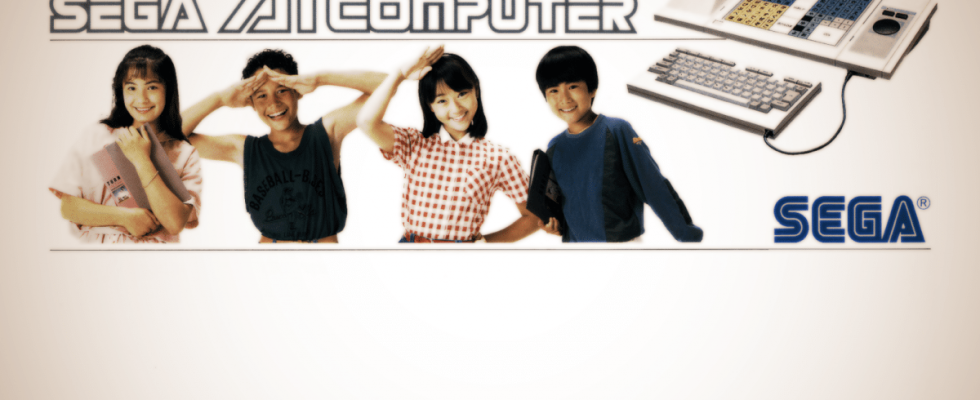Not even die-hard Sega fans might be too familiar with the “Sega AI Computer.” After all, even on retro portals there are only a few lines about the strange hardware for the educational sector from 1986. More light was recently shed on SMS Power, a website of “Sega 8-bit preservationists and fanatics”. The one published there detailed articles about the Sega AI computer contains a wealth of information about this historical oddity, including ROMs for dozens of previously unreleased applications, some of which even now run in the MAME emulation software.
Advertisement

The Sega AI Computer’s rectangular touch surface is almost as large as the keyboard.
(Image: SMS Power)
An AI vision of the future from the 80s
The Sega AI computer is equipped with a 16-bit chip from NEC that “runs at a rapid 5 MHz and has a massive 128 Kbytes of RAM.” SMS Power’s research suggests that the device was sold primarily to Japanese schools from 1986 to 1989, which may explain its widespread obscurity even decades later. Advertisements from the time indicate that a US version was planned but was never distributed. The computer had a total of 512 KBytes of ROM, including 2 × 64 KBytes for the system and the Prolog interpreter, 128 KBytes for displaying the Japanese and US character sets and 2 × 128 KBytes for voice output
Despite being distributed exclusively in Japan, the Sega AI Computer’s case includes an English-language description highlighting support for the AI-focused Prolog logic programming language and promising that the device will “take you into the world of artificial intelligence.” In fact, a 1986 article in Electronics Magazine (archived by SMS Power) describes what sounds like a precursor to today’s generative AI:
“In prompt mode, the child is asked about their day’s activities and responds with one- or two-word answers. The computer program then writes a grammatically correct diary entry based on these answers. With advanced CAI applications, the computer is more flexible than previous systems “It is able to analyze a user’s natural language input and assess the person’s level of competence. It can then move on to material of appropriate difficulty, rather than simply progressing through one level at a time.”
But it wasn’t just the AI capabilities that made the Sega AI computer special. It has a large, rectangular touch surface with overlays, an 8-direction pad and three buttons that could be used to program new user interfaces. The system also houses a speech synthesizer that was able to recreate the basic Japanese phonemes, as well as a sound chip from Texas Instruments – the SN76489, originally developed for the TI 99/4A. A microphone connection, RS-232 interface and cassette recorder with 9,600 baud complete the equipment.
Rare hardware purchased at auction
While the Sega AI Computer has been known in certain circles for some time, detailed information about its functionality and software has been difficult to come by, particularly in the English-speaking world. That changed in 2014, when a rare Yahoo auction listing offered a packaged AI computer and software. SMS Power was able to crowdfund this auction and later received a keyboard and other software from the winner of an auction in 2022.
SMS Power points out that most of the programs were previously not found on the Internet at all. The website’s community has therefore taken on the task of archiving these ROMs and developing a new MAME driver that already enables partial emulation of the system. However, this does not support a keyboard, cassette drive or language emulation.
According to SMS Power, the downloaded software is “educational and aimed primarily at children”, but is overloaded with Japanese text, which will make it difficult for many foreigners to work with. However, it is remarkable how much effort the community has put into filling this gap in knowledge of Sega history. SMS Power’s report on the results is worth a look, as is the extensive documentation including screenshotsphotos, contemporary articles and advertisements.
This article first appeared on Ars Technica.
(vza)

